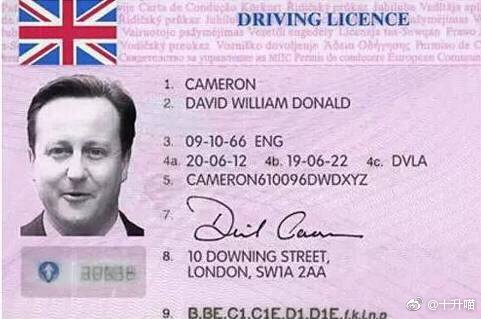C1.6 UK Driving Licence¶
How to Get a UK Driving Licence
Official Link: https://www.gov.uk/learn-to-drive-a-car
View vehicle information (Check vehicle tax, MOT status, etc.)
https://www.gov.uk/check-vehicle-informationTax your vehicle
https://www.gov.uk/vehicle-taxCheck MOT history
https://www.gov.uk/check-mot-historyView your driving licence information
https://www.gov.uk/view-driving-licenceApply for your first provisional driving licence
https://www.gov.uk/apply-first-provisional-driving-licence
If a driver gets 6 or more penalty points on their licence within 2 years of passing their test, their licence will be revoked. This includes any points given before passing the test. Points remain valid for 3 years. New drivers start with 6 points and only get the full 12 points after 2 years. Therefore, you only have 6 points for the first two years. For some speeding offences, you may typically have the opportunity to take a speed awareness course once every three years to avoid getting points.
Reminder: A purchased car needs to be insured, registered, taxed, and have a valid MOT certificate.
Reminder: Children under 12 years old or 135cm in height must use a child car seat.
Holders of a foreign passport driving in Great Britain for the first time can use their existing licence for 12 months. This means a Chinese student in Britain can use their Chinese driving licence for 12 months, provided it is accompanied by a certified translation. After 12 months, it can no longer be used. Therefore, to continue driving, you must apply for a UK driving licence, and this should be done before the initial 12-month period expires. Please see my other article for detailed information.
Detailed Regulations & Requirements
Category | Details | Notes / Consequences |
I. Requirements | ||
Driver Requirements | 1. Age: Must be the minimum driving age (usually 17 for a car). | Can be fined or prosecuted for violations. |
Vehicle Requirements | 1. Registration: Must be registered with the DVLA. | Driving without insurance can lead to an unlimited fine, 6-8 points, and disqualification. |
Information Changes | Must inform the DVLA if you change your name, address, vehicle details, sell the vehicle, or develop a medical condition. | Failure to update information can be an offence. |
Producing Documents | Must show the police your: | If not carried, you usually have 7 days to produce them at a police station. |
II. Eyesight | ||
Basic Standards | 1. Distance: Able to read a number plate from 20 metres. | Can wear glasses or contact lenses for the test. |
Declaration Duty | Must tell the DVLA about any medical condition affecting both eyes (or only eye if you have one). Short/long-sightedness or colour blindness need not be declared. | Failure to declare can lead to prosecution. |
LGV/PCV Standards | Stricter standards apply, e.g., at least 0.8 (6/7.5) in the better eye. | |
Practical Test | The test begins with an eyesight test using a number plate. Failure means immediate test termination and licence revocation. | |
III. Provisional Licence | ||
Application Criteria | 1. Be at least 15 years and 9 months old. | Online application: £34 |
How to Apply | 1. Apply online via the official government website. | |
IV. Learning to Drive | ||
General Rules | 1. L-Plates: Must display L-plates (or D-plates in Wales) on the front and rear. | Driving unsupervised: Up to £1000 fine & 6 points. |
Supervisor Qualifications | 1. Be at least 21 years old. | Some insurers may require the supervisor to be 25. |
Driving Instructors | Paid instructors must be either an Approved Driving Instructor (ADI) or a trainee licence holder, displaying the appropriate coloured badge. | Instructors set their own prices. |
Insurance | Must be insured. Can use your own policy or be covered by the car owner's policy. | Penalties for driving uninsured are severe. |
P-Plates | After passing, can voluntarily use green P-plates to show you are a new driver. | Not compulsory. |
V. Theory Test | ||
Test Structure | 1. Multiple-choice: 50 questions, 57 minutes. | Test fee: £23 |
Pass Mark | 1. Multiple-choice: 43 out of 50 correct. | Must pass both parts simultaneously. |
Preparation | Official resources: The Highway Code, Know Your Traffic Signs, The Official DVSA Guide to Driving: the essential skills. Official app and online practice tests available. | |
On Test Day | 1. Bring: UK photocard driving licence. | Late arrival = cancelled test & no refund. Cheating is a criminal offence. |
Special Needs | Can request support, e.g., extra time, voiceover, reading assistance, British Sign Language. Must state when booking and provide proof. | |
Test Result | Pass: Get a pass certificate number valid for 2 years. | Must pass the practical test within 2 years, or theory pass expires. |
Change/Cancel | Must give at least 3 full working days' notice, or fee is lost. Refunds possible for special reasons (e.g., illness) with evidence. | |
VI. Practical Test | ||
Booking Condition | Must have passed the theory test. | Car test fee: £62 - £75 |
What to Bring | 1. UK photocard driving licence. | Wrong documents = cancelled test & no refund. |
Change/Cancel | Car test: Change/cancel free of charge with at least 10 full working days' notice. | |
VII. Pass Plus | ||
Description | A voluntary practical training course for new drivers to build safety skills. May lead to car insurance discounts. | |
Content & Duration | Covers 6 modules (town, all-weather, rural, night, dual carriageway, motorway). Minimum 6 hours. | Cost varies by area/instructor. |
Getting Certificate | After assessment by a registered instructor, send the signed training report to the DVSA to apply for the certificate. | Use certificate to apply |
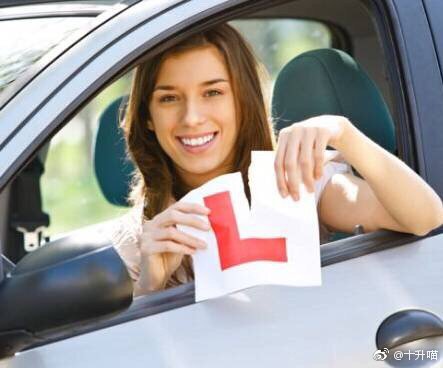
There are 4 main steps to getting a driving licence in the UK:
Apply for a provisional licence.
Practise driving.
Pass the theory test.
Pass the practical (road) test.
However, the official GOV.UK website breaks this down into 6 separate, more detailed steps:
Check you're allowed to drive.
Get a provisional licence.
Driving lessons and practice.
Book and manage your theory test.
Book and manage your driving test.
After you pass the driving test
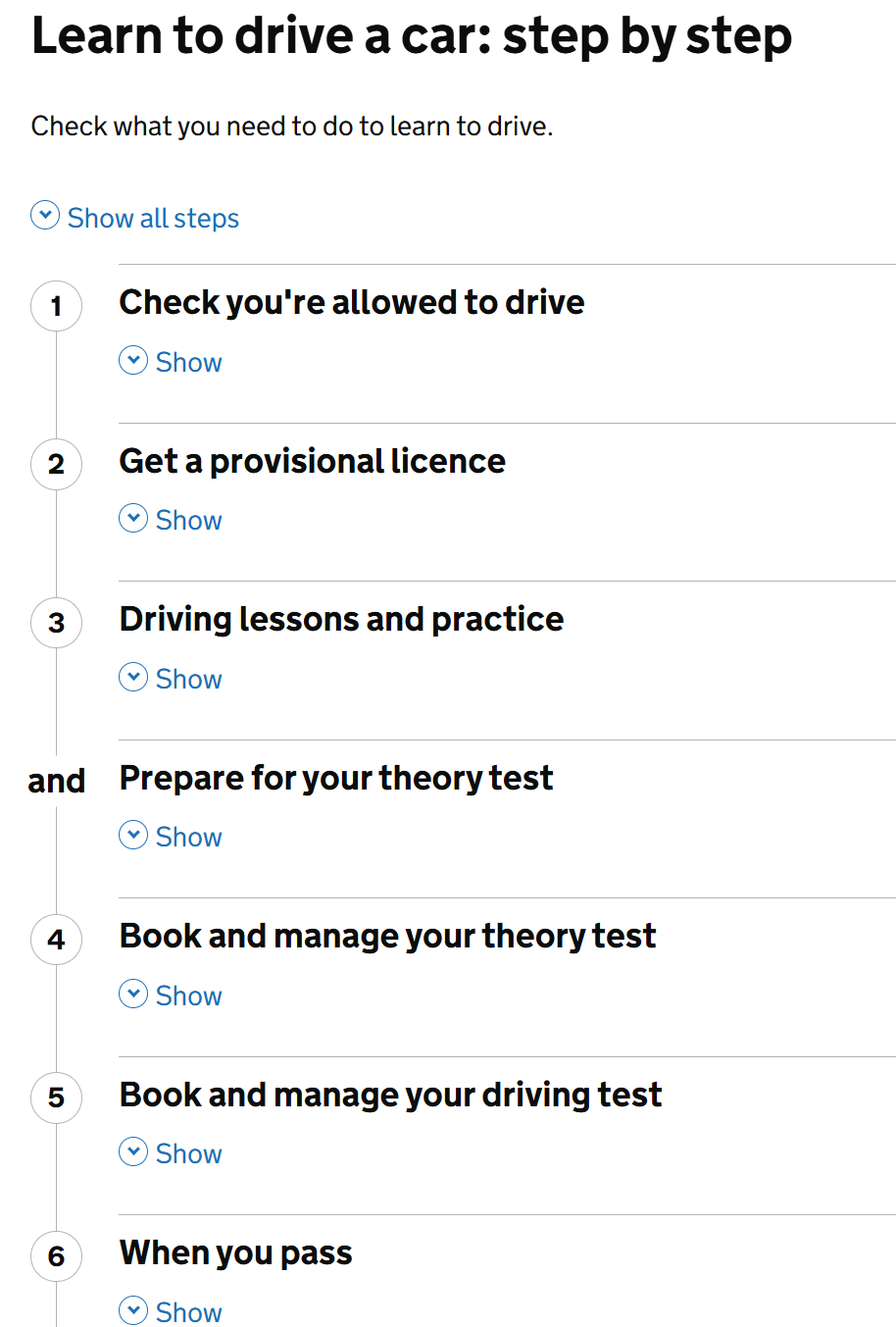
First, apply for a provisional licence
Be at least 15 years and 9 months old (but you must be 17 to drive a car).
Be able to read a number plate from 20 metres away.
Be allowed to live in Great Britain (England, Scotland, and Wales) for at least 185 days and hold a valid UK visa, e.g., a Student visa, Work visa, etc.
The online application fee is £34 (prices are subject to change; please check the official source for the current fee).
A valid passport (must have at least 12 months remaining on it).
Your address details for where you live.
You may be asked to provide additional information, such as your National Insurance number if you know it (some students have this printed on their BRP and do not need to apply separately).
A photograph that meets the required specifications.

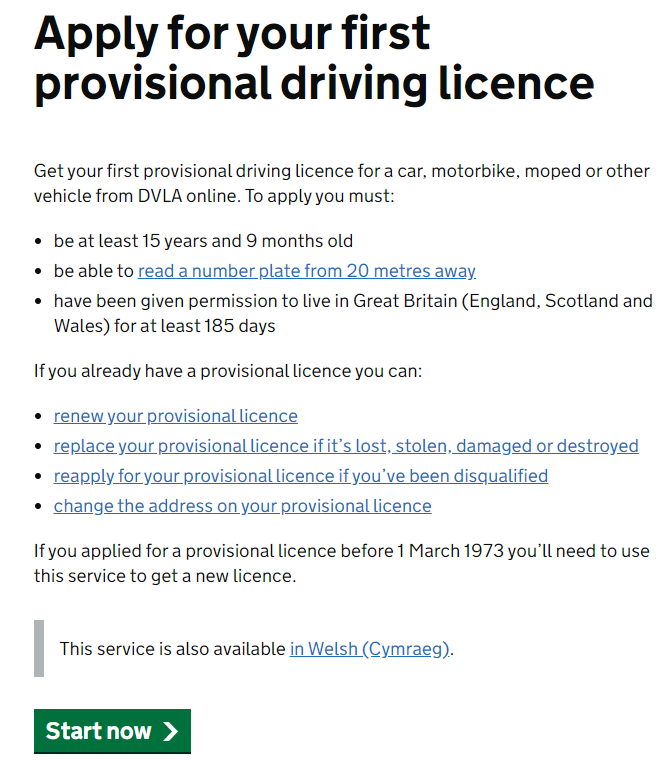
There are two ways to apply: via the Post Office or online.
Applying via the Post Office
Go to your local Post Office and ask for a free Provisional Driving Licence application form. There are two types of forms: a D1 form for cars and small vehicles, and a D2 form for lorries or large vehicles. Therefore, to drive a car, you need to fill in the D1 form.
Post Office official link: https://www.postoffice.co.uk/identity/provisional-driving-licence
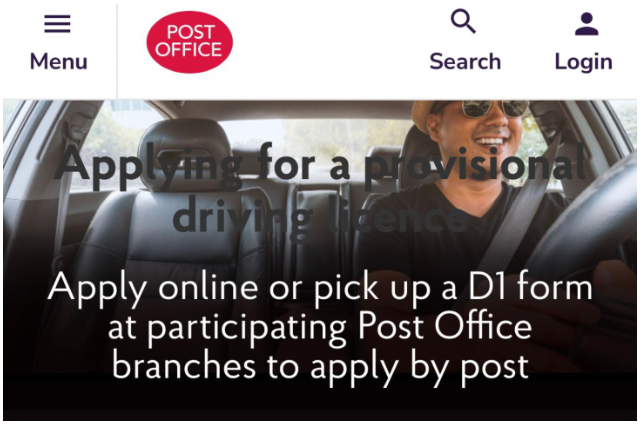

On the D1 form, you will encounter a requirement to have a photo signed to verify your identity. This involves finding someone who has known you personally for at least 2 years to sign both your photo and the form. However, for many people who have just arrived in the UK, they may not know anyone here for that long.
In this situation, you will need to find the location of your local DVLA Office by visiting the website: https://www.gov.uk/contact-the-dvla
The DVLA, which stands for the Driver and Vehicle Licensing Agency, handles driving licences, vehicle registration, number plates, and similar matters. It is roughly equivalent to the vehicle management government department in China.
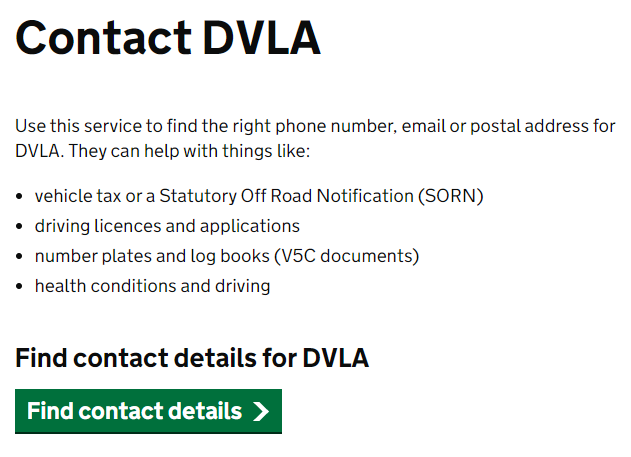
Then, take your completed D1 form, passport, and BRP to your local DVLA office. The staff there will assist you with the signature.
Once the form is fully completed, follow the instructions on the form to send the application, fee, and required documents in an envelope to the address provided. Please note the specified payment methods, which can include a cheque or a Postal Order purchased at a Post Office. Remember, you will be sending original documents, so for security, it is advisable to also purchase a 'Special Delivery' envelope, address it to yourself, and include it inside the main envelope sent to the DVLA.
Online Application
Applying online is now very convenient and is generally the recommended method.
The online application link is: https://www.gov.uk/apply-first-provisional-driving-licence
(Please note: This link is for the new application system. However, if you are applying for your first provisional licence and are not a British national, as of 21st September 2022, you cannot use this new system and must use the older online application system instead.

If you are applying for your first provisional driving licence and are not a British national, as of September 21, 2022, you still cannot use the new system mentioned above and must use the old online application system instead. The link for the old system is provided below:
https://motoring.dvla.gov.uk/service/DvoConsumer.portal?_nfpb=true&_pageLabel=FAP&_nfls=false
【If you find that this link does not work, don't worry. Simply go to the new system's link and follow the application steps there. The system will ask if you have a British passport, etc. If you do not, the official website should automatically present a button or prompt to redirect you to the old application system.】
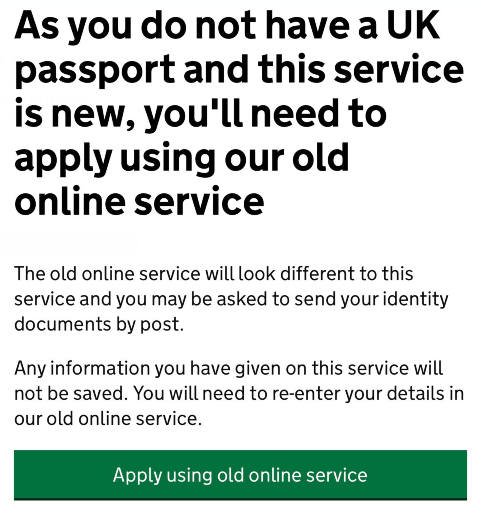
如下图是老的申请系统

After completing the online form and paying the £34 fee by card, you must post your passport, photograph, and any other required documents to the specified address. You should receive your provisional licence from the DVLA in approximately 10 working days. It is valid for 10 years. If the DVLA subsequently requests other original documents, such as your BRP, simply send them as instructed. The DVLA will return your original documents, but note that they are not necessarily sent back at the same time as your provisional licence; they may arrive in a separate mailing 2-3 weeks later.
Practising Driving
Once you have your provisional licence, you can start taking driving lessons with an instructor. Well-known driving schools in the UK include the AA Driving School, BSM Driving School, and RED Driving School. There are also independent instructors, who are often cheaper. The AA Driving School is generally recommended for its good value. Instructors in the UK typically pick you up and drop you off, which is very convenient.
A classmate of mine from Russia started studying the theory book soon after term began and passed her test within a few weeks – she was that quick. She used the AA school, and I really admired her for it. She was also a top student in our class. I asked her about the test process, and she was very enthusiastic, saying, "You should go for it, it's super easy!"
Note: If you already have a driving licence from another country and are very confident in your driving skills, you do not necessarily need to take lessons and can book the practical test directly. If you do choose to take lessons, you can schedule them according to your own availability, and they are charged by the hour. It's worth noting that automatic cars are less common in the UK than manual cars, so there are fewer instructors for automatics. When booking, you must specify whether you want to learn in a manual or automatic car.
Theory Test
The UK theory test was formerly called the 'Driving Theory Test' but is now officially referred to as the 'practice theory test'.
Unlike in some countries, it consists of two parts: Multiple-choice questions and a Hazard perception test.
The Multiple-choice questions section is similar to standard tests. It consists of 50 questions, and you have one hour to answer at least 43 correctly to pass. The questions cover the Highway Code and road signs, requiring you to learn a lot of specific vocabulary.
The Hazard perception test is different. It involves watching several short video clips from a driver's perspective. You must identify developing hazards (like pedestrians stepping out, cyclists, or sudden changes in weather) and click the mouse to indicate your reaction.
Therefore, you need to practise extensively beforehand, covering both the theory knowledge and the hazard perception simulations.
You can download the officially recommended paid apps for practice: Official DVSA Theory Test Kit and DVSA Hazard Perception. Free alternative apps are also available – simply search in your device's app store.


To access free practice tests, use the link: www.safedrivingforlife.info
To purchase the official books, the link is: https://www.safedrivingforlife.info/shop

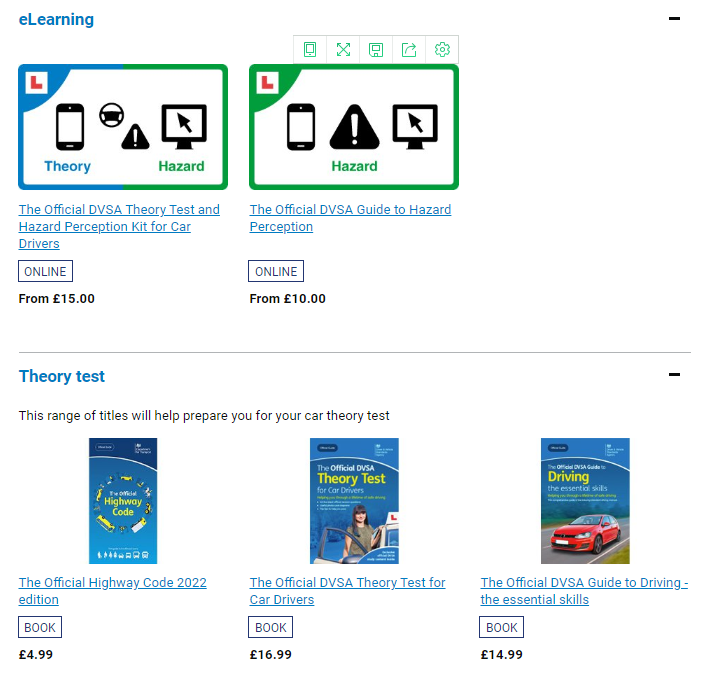
aslo ebay sell
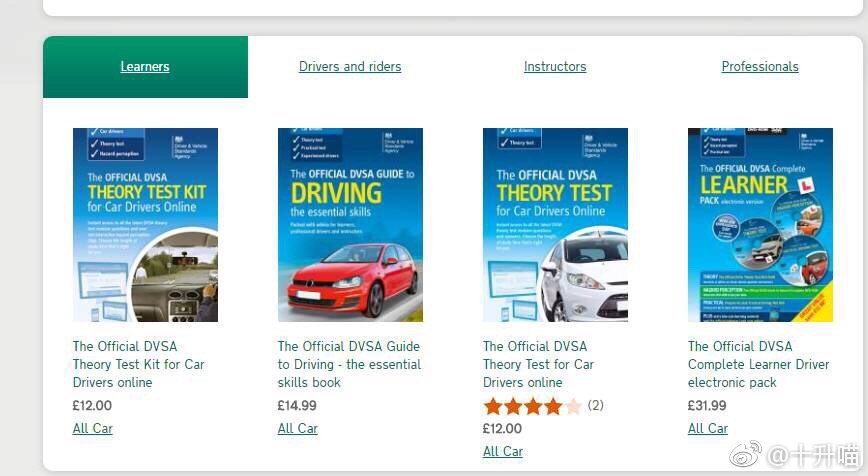
After buying the books, revising thoroughly, and feeling confident, you can then book your test.
First, log on to the website:
https://www.gov.uk/find-theory-test-centre
Find your nearest test centre.
Please note: the test centre you choose, which will ideally be the closest and most convenient for you, is where you will need to go to take your test. Almost every town in the UK has a test centre.

Then, proceed to book your test online.
Log on to the website to book your test time: https://www.gov.uk/book-theory-test

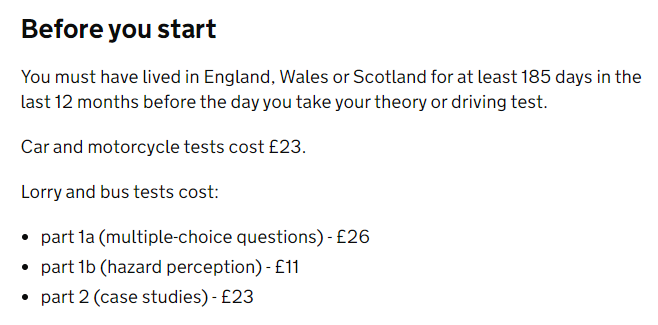
Whether you need to book, check, change, or cancel your theory test, you must do so online by logging into this booking website.

Please note: On the day of the test, you must bring your Provisional Driving Licence. Remember to arrive at the test centre half an hour early. Unlike in some countries, in the UK, your test time starts from the moment you begin entering your details into the computer, effectively operating on a 'turn up and take the test' basis.
Once the allocated test time ends, the system closes, and you cannot review or change your answers. Under normal circumstances, most people complete the test in around 20 minutes, so time is generally sufficient. If you experience a computer crash or any other issue during the test, inform the invigilator immediately to avoid losing your test time.
You will receive your results immediately after finishing the test. If you pass, your theory test certificate is valid for 2 years, during which time you must book and pass your practical driving test. If you do not pass your practical test within this 2-year period, you will have to retake the theory test. If you fail the theory test, you can book another one after a few days.
Practical Test
The UK practical test primarily assesses your safety awareness – whether you can drive safely and respond correctly to situations on the road. Your instructor will inform you of the test location and will typically pick you up and drop you off on the day. You can also request that your instructor accompanies you in the car during the test, but this usually costs extra.
The link to book your practical test is:
https://www.gov.uk/book-driving-test
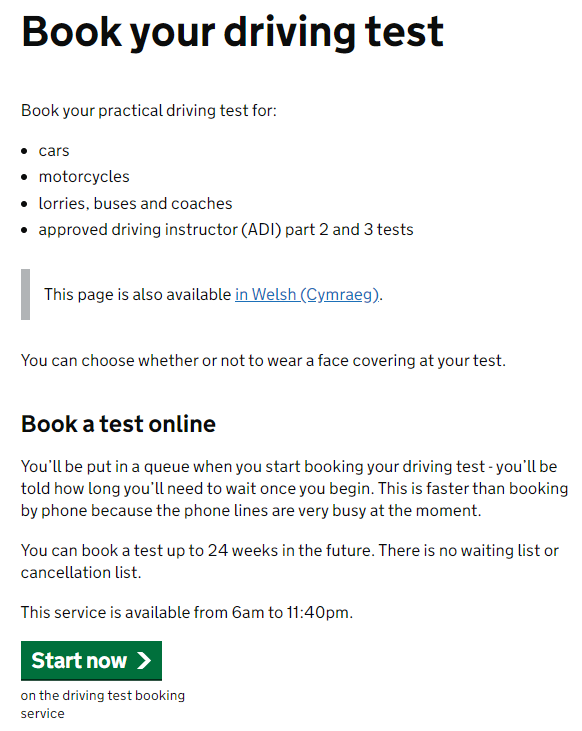
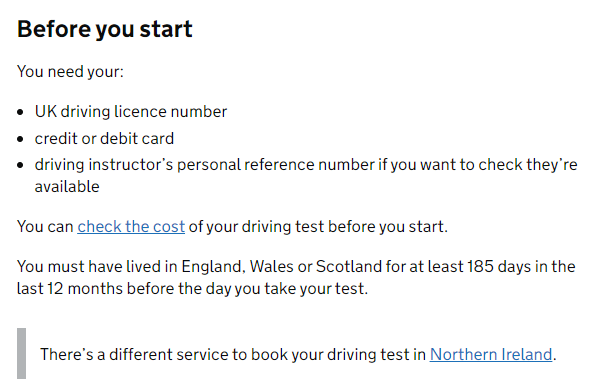
The test lasts approximately 40 minutes, though this can vary depending on traffic conditions on the day. On one of my tests, due to heavy traffic, I was driving for a full hour (and I failed, of course). During the practical test, you are allowed a maximum of 15 minor driving faults. However, just one serious or dangerous fault will result in a fail. Examples of serious faults include: stopping in a yellow box junction or at a junction when you shouldn't, not slowing down and giving way at double white lines, failing to give way to cyclists, or not checking your surroundings properly when reversing.
The examiner uses a driving test report form during the test. The test primarily assesses the elements listed on this form, which consists of several pages.
Link to the full form:
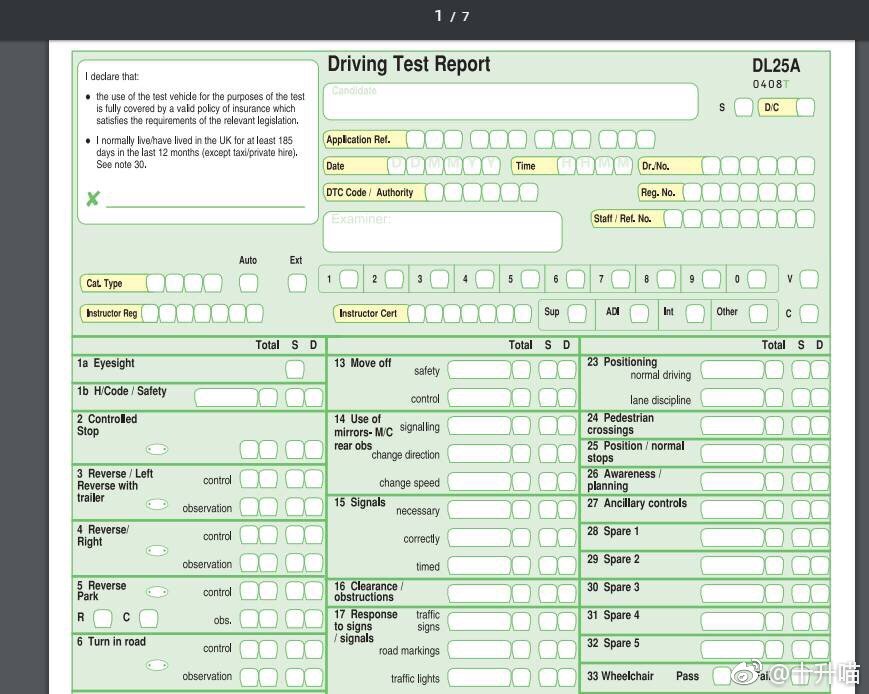
You will receive the result of your practical test at the test centre. If you pass, you will be told immediately. If you fail, you can book another test after 10 working days.
Important: While practising for your test with a provisional licence, you must display 'L' plates (or 'D' plates in Wales) on both the front and rear of the vehicle. These are available for purchase at stores like Wilko.
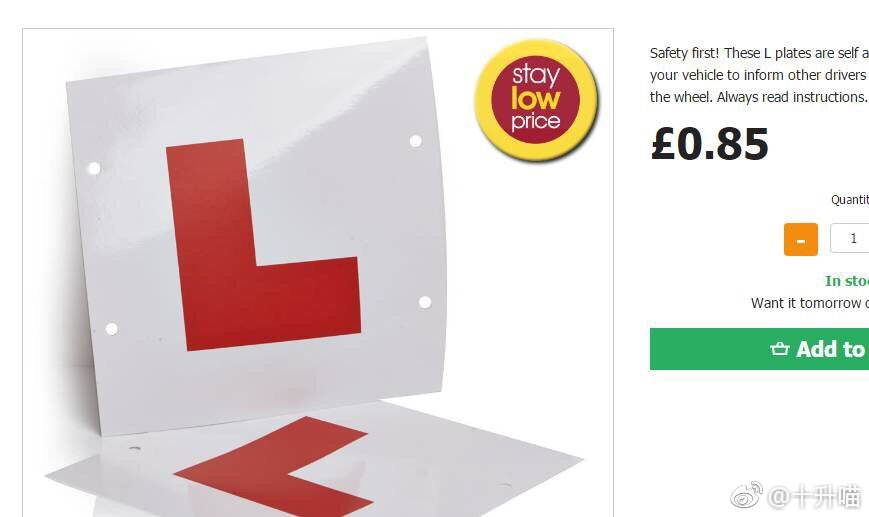
Once you pass, the driving licence you receive looks roughly like this::
